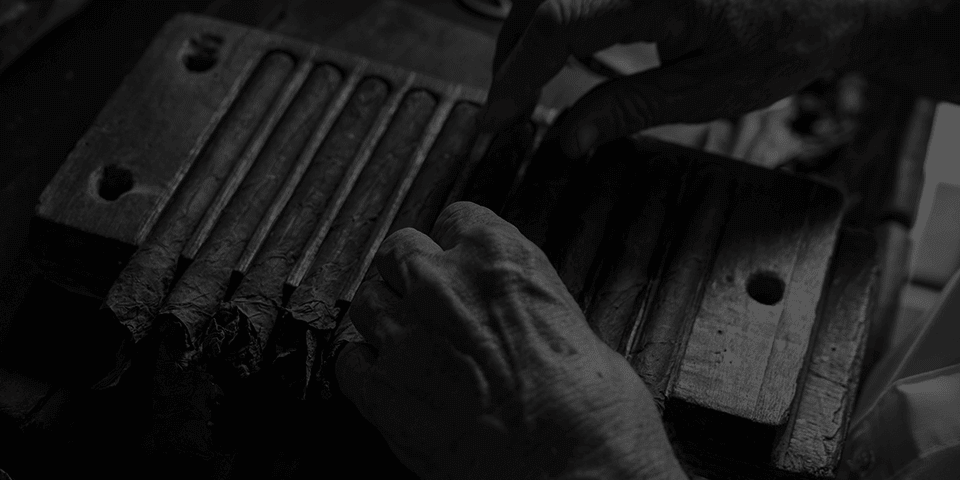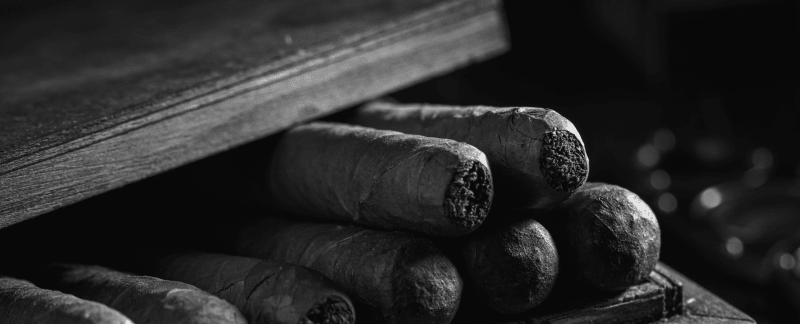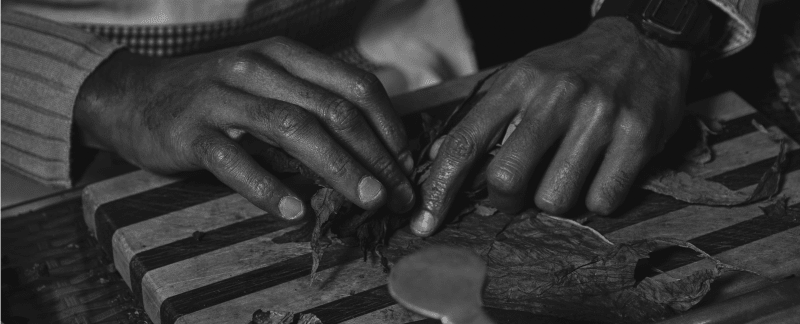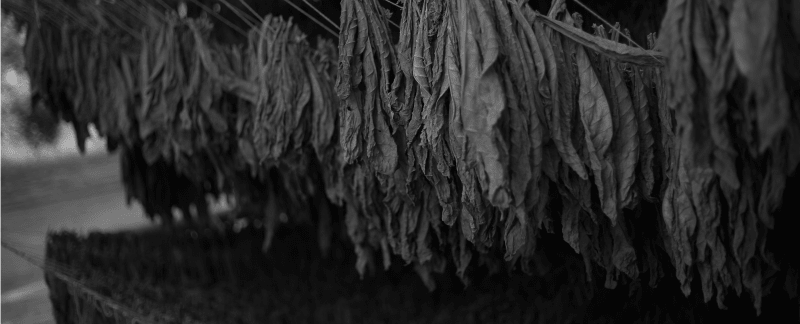Education Seed to Cigar

8: Storing Cigars
Posted in
Seed to Cigar
Storing cigars correctly will preserve them for years to come. Find out what you need to know about this best practice here.
7: Banding & Boxing Cigars
Posted in
Seed to Cigar
For the most part, cigars look a lot alike. Sure, there are certain cigar oddities –– such as excessively long cigars or cigars that come in bizarre shapes. But, generally speaking, a majority of cigars share a similar size, shape, and color. If you were to walk into a cigar shop, pick a cigar at random and remove the band, it would be incredibly difficult for anyone –– even an experienced cigar smoker –– to identify the stick with any degree of accuracy.
4: Sorting & Grading Tobacco
Posted in
Seed to Cigar
Unlike other massive manufacturing undertakings, which are often completely automated (or nearly so), the majority of the work done to create a cigar is carried out by human beings with their hands. A big reason why noticeable errors don’t occur more regularly during cigar production is the sorting and grading process.
While all tobacco leaves share certain characteristics, not all tobacco leaves are suitable for use in a cigar. Quality sorting and grading guarantees the integrity of the cigar –– from appearance to taste to performance.
5: Rolling Tobacco
Posted in
Seed to Cigar
Every premium cigar you’ve ever had was rolled by hand. As opposed to cigarettes and machine-wrapped cigars, premium cigars are crafted by hand by trained artisans. The art of rolling a cigar is a time-honored tradition that can take years to master. While we’ll take a quick look at this process here, remember that it is much easier said than done.
Properly rolling a cigar ensures that the flavors complement each other well, that the cigar burns evenly, and that the draw is measured and smooth. You can tell when a cigar has been rolled properly by the quality of the burn, the solid development of the ash, and balance of the draw. Even slight imperfections in the rolling process can compromise the integrity of a cigar, which is why professional cigar rollers are held in such high esteem and train so vigorously to hone their skills.
6: Aging Tobacco
Posted in
Seed to Cigar
By modern standards, cigars are time-intensive products. It can take years for master blenders to transform tobacco seeds into premium cigars. Indeed, multiple stages of the cultivation process require serious patience. It takes months to grow the seedlings, months to harvest the plant, months to cure the tobacco leaves, and months to ferment them. And after all that, cigars need at least one month to simply “rest” before they’re shipped to retailers.
However, aging is a critical component of cigar production. You can’t “rush” tobacco development, and certain cigars – like Maduros – simply require lots of time to achieve their desired color, texture, and flavor.
3: Curing & Fermentation
Posted in
Seed to Cigar
The character of a cigar is determined by two types of factors: natural influences and man-made ones. Natural factors that affect tobacco development include elements like the weather, the composition of the soil, and the very nature of the tobacco plant itself. There’s not much a blender can do about the climate in Ecuador or the soil in Nicaragua.
However, other influences –– like curing and fermentation –– are under direct control of master cigar blenders. This allows for a great range of creativity and exploration. Indeed, the curing and fermentation process is (arguably) the stage in cigar production when the flavors and qualities that come to define an individual cigar start to take shape.
2: Harvesting Tobacco
Posted in
Seed to Cigar
Like so many aspects of cigar production, harvesting is a labor-intensive process done primarily by hand. Depending on the type of tobacco grown, 2-full time workers may be required for harvesting purposes –– per acre. Because of the diverse nature of tobacco (and cigars), though, the act of harvesting can occur at different times and in different ways.
Ultimately, how a tobacco plant is harvested is determined by various factors that all influence the quality and performance of the final product –– the cigar. But let’s not get ahead of ourselves. First, we need to take a look at something else entirely: the sun.
1: Planting Tobacco
Posted in
Seed to Cigar
The story of every cigar begins with a tobacco seed and a patch of soil. Though many other factors affect the character and quality of a cigar, these two fundamental elements –– the seeds and the soil –– form the basis of any cigar smoking experience.
As such, choosing when and where to plant a tobacco seed can have a huge impact on the way the plant grows, the way the leaves develop, and ultimately, how you experience the cigar as a finished product. That’s why tobaccos from certain regions tend to have distinctive characteristics. Just like German beer and Japanese Kobe beef have a unique quality, so too can tobaccos grown in places like The Dominican Republic, Indonesia, or Brazil. Before we review the differences between growing regions, though, let’s first focus on the seed itself.










